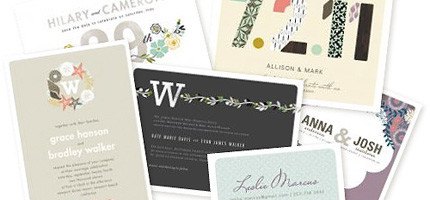Minted: Using the Crowd to Define Good Design

Minted is re-imagining the online marketplace model by using crowdsourcing to curate its collection of designs
Minted is an online marketplace of artists and designers. The artwork and goods sold on Minted’s website are sourced from independent artists and designers around the world. To select the designs, Minted hosts monthly challenges where creative professionals submit their best work and the community of Minted users votes for their favorite designs. Using this crowd-sourced e-commerce model, Minted has been able to achieve huge success in a competitive space and develop a strong, double-sided community of creatives and consumers.
Minted offers strong incentives for both the contributing artists and the crowd of shoppers:
- For local artists scattered around the world (43 countries are currently represented), Minted offers a strong platform where they can promote and sell their designs to a broad audience. Minted handles all the order processing and fulfillment so artists can focus on what they do best – creating great designs. Also the barrier to entry for people to submit designs is low, inviting people who are not formally trained to try their hand at art and design. Additionally, through Minted’s monthly competitions, artists who submit winning designs receive an up-front payment and a commission for each item sold. Yes Minted takes a larger cut that many other online marketplaces (Etsy for example), but their handling of all logistics makes it a hassle-free and worthwhile experience for artists. To further create value for designers, the company has discussed plans to allow artists to set up stores on the Minted’s website (similar to Etsy and Creative Market) where they can sell not only wining designs, but also other designs in their portfolio to increase their sales potential.
- For the crowd of online shoppers, Minted empowers them to vote on (and ideally purchase) designs that truly appeal to them. This more customizable shopping experience is especially important for areas like wedding stationary and home décor, where people’s personal tastes determine their purchasing habits. The design competition model also creates value for shoppers by ensuring a certain level of quality for the designs they find on Minted’s site.

Minted is also able to capture value from the enormous value it creates for its double-sided community. To drive good consumer behavior, Minted weighs certain users’ votes more heavily than others depending on their purchase history. So if you purchased from Minted before, your vote will count more in determining winning designs. Additionally, Minted’s online design competitions require minimal resources to host but generate large returns in the form of high sales volume. The crowdsourcing model also serves as a low-cost way for Minted to curate the collection of designs for sale. By waiting to print designs until an order is placed, Minted is able to keep inventory and holding costs to a minimum while still maintaining control of the fulfillment process, and thus the overall customer experience.
While the online marketplace space is competitive, Minted has already proven that its inventory-light, design-focused model can generate impressive sales ($100M), attract funding ($90M), and, more importantly, appeal to a growing crowd of artists and customers. Minted has already expanded from its initial focus on stationary design to include home décor and textiles, and possibilities abound for the company to introduce new verticals in the future.
Sources:
http://techcrunch.com/2014/10/30/minted-38m-textiles/
http://www.wired.com/2015/07/online-marketplaces-future-e-commerce/



Interesting! I didn’t realize Minted gave more weight to previous purchasers. I think this could be a good way to weed out the infrequent users, but I don’t think high purchase volume is necessarily a good indicator of superior design sense. Instead, they could have the artists whose designs get purchased more frequently count for more votes? It will be interesting to see if they can get in to the home decor space as easily – what works with printing is the fact that the digital image looks exactly like the printed version (allowing them to not test products or stock inventory), but I’m not sure that will be the same for hard goods.
Thanks for the post. I think it’s pretty interesting that artists are willing to use Minted, with its higher fee, versus Etsy simply because the logistics are handled by Minted. I would be worried that Etsy or another site could start handling logistics as well and capture the sellers who currently use Minted. Presumably, sellers and buyers who use Minted also use Etsy, so their pain point with Etsy will decrease with the logistics offering. Etsy has a much larger customer, making them a more attractive platfrom for an artist once you take away this key differentiator for Minted.